|
TennisOne Lessons Extreme Makeover: The One-handed BackhandDavid W. Smith, Senior Editor TennisOne Often, with the start of a new year players tend to take stock of their games and like to use the new year as a starting or a reference point, in which they can judge their improvement from over the course of the year. Of the hundreds of adults who come to me for lessons, the vast majority need help with the backhand. And, not surprising, most of them are hitting a one-hander. It should come as no surprise why so many pros, college players, and top juniors use two-handed backhands. But, that is not to say that a one-handed backhand can’t be hit with as much force and effectiveness a two-handed backhand. Arguably, the two greatest players in the world, Roger Federer and Pete Sampras, both hit one-handed backhands. The reason so many recreational players hit one-handed backhands and, subsequently end up needing significant help to overcome problems with the stroke can be pinpointed by looking at two things: 1. Most players who are self-taught, seldom teach themselves to use a two-handed stroke; and those who have taught themselves the one-handed backhand generally develop poor mechanics and subsequently bad habits to the point that it never develops into a solid stroke, let alone a weapon.
The proper swing mechanics, grips, and positioning necessary to generate a decent one-handed backhand are foreign and often uncomfortable for most players. So, it stands to reason that anyone trying to play tennis with limited or no instructional input will favor more comfortable form, unfortunately the more comfortable form rarely leads to a functional stroke. However, all is not lost because those who want to learn to hit the one-handed backhand correctly and have the determination to stick with it, can learn to do so. And, many can end up having a solid, effective backhand in the process. One-Handed Backhand Hitting the backhand with one hand offers some advantages in terms of reach and freedom of movement, however, these very same advantages are also the reasons many players never develop the one-handed backhand into a formidable weapon. Reach here is the operative word. Because we can reach out and hit one-handed the tendency is to use minimal footwork and that encourages poor form. Quite simply, players tend to not get in the right position to hit. Also, unlike the two-handed backhand, the one-hander does not have the second hand on the racquet to aid stability. This can lead to a slashing or hacking stoke with little or none of the refinement we associate with a reliable backhand that we see skilled players executing.
Basic One-handed Backhand Technique Much like the one-handed forehand, there is a great deal of variety exhibited among among recreational players who hit the one-handed backhand. Historically, the one-handed backhand has seen a shift from the continental grip (used predominantly in the 60’s) to a full Eastern backhand grip used by most of the top players today. There are a few players on tour still use a Continental grip for their one-handed backhand, however, most now use the more powerful full Eastern backhand grip.
Ready Position In the ready position, make sure the off-hand is placed at the throat of the racquet to help facilitate the proper backswing. Many pros who use an Eastern grip prefer this position because it makes it easier and quicker to make a grip change to a forehand should that be necessary. However, some players prefer to hold either a neutral Continental grip or an Eastern Forehand grip or even a semi-western grip and make the adjustment for the backhand during the backswing. Each of these grip positions is entirely acceptable for building your backhand foundation. The key is that any change be done immediately during the backswing or the unit turn. Grip As I've said, anyone using a one-handed backhand to hit topspin should to use a full eastern backhand grip. This is the most solid and natural topspin-orientated grip. Beginners will usually find themselves hitting many balls into the net with this grip since it sets up the racquet more closed than a neutral continental grip. This is another reason why so many self-taught players don’t develop a solid one-handed backhand: they avoid this more advanced grip and instead use the more comfortable and initially more successful yet weaker continental grip. The number one fault I see players among players hitting one-handed backhands is they try to roll the racquet over the ball with their wrist and forearm. This movement usually occurs because of the weaker grip causing them to open the racquet face up on the backswing. This makes a solid, stable swing almost impossible. In addition, this action puts tremendous strain on the arm and is the leading cause of tennis elbow in recreational players. Backswing The turn on the one-handed backswing is similar to that of the two-hander. I recommend the player use the off-hand to help take the racquet back. This hand also acts as a stabilizer so the dominant hand can make the grip change if needed. Players who don’t use the off-hand in making the backswing often lose control of the racquet’s head when making the turn. These players traditionally take the racket back too high or let the wrist flex or allow too much play in the racquet head during the swing Shoulder RotationBecause the two-handed backhand naturally creates the proper shoulder turn during the back swing, little conscious control is needed to coordinate the shoulder turn with the stroke. However, with the one-handed backhand, players often take the racquet back with just the arm and remain somewhat fixed in a facing the net position. For this reason, most top one-handed players will take the racquet back with almost the same mechanics as a two-handed stroke. Generally, the non-dominant hand cradles the racquet at the throat throughout the backswing component. This position helps bring the right shoulder (for right-handers) sideways, pointing towards the target. This point of the backswing is critical in order to produce the proper setup for the remaining parts of the backhand.
Contact and FootworkJust like any topspin stroke, the racquet head must drop below the ball prior to contact. Just as with the two-handed stroke, the racquet head should drop down during the backswing with the wrist tilting downward. It is at this point that the wrist should lock and the racquet motion should be generated by a combination of a firm arm and slight body rotation. The contact point should be further out in front of the body than with the two-handed backhand, anywhere from 6 to 15 inches in front of the forward knee. The more out in front contact can be made, the easier it is for the player can hit strong, sharp angled crosscourt shots. At contact, the racquet will be held almost at a 90 degree angle to the forearm with the racquet strings moving up and through the center point on the back side of the ball. The footwork for the one-handed backhand can incorporate either a closed crossover step or stance, or an open stance. I highly recommend the student learn and develop the closed stance foundation first. This position teaches the player not to over rotate during contact and helps create greater control on both crosscourt and down-the-line shots. Players, who step out with the non-dominant foot for the backhand, (open stance), tend not to get the upper torso turned sideways enough. However, it is fairly easy for players who have mastered the closed stance to begin hitting with a proper open stance. In fact, it is natural progression for most players who learn the closed stance backhand to evolve to the open stance backhand as competitive experience dictates. Key Position Points As the player begins their swing up and through the ball, typically, the non-dominant arm will move backward. This move is similar to an umpire making an exaggerated “Safe” signal in baseball. This move of the non-dominant arm helps keep the player from over rotating through the shot. This movement is even more apparent during the slice backhand which will be discussed later. (See Figures 5 & 6) The most important aspect of a good one-handed backhand is to keep the racquet’s relationship to the forearm the same from well before contact to well after. As with any good stroke in tennis, the more the racquet retains its integrity within the swing, the more the player can hit a reliable, repeatable stroke. As mentioned earlier, a common problem is when players try to hit topspin by flipping the racquet over the ball using the wrist. Because of the eastern backhand grip, the racquet lays back at nearly a 90 degree angle to the forearm. When players swing, if they try to make contact too far behind the ideal contact zone, the angle of the racquet will be very late. The body feels this and immediately will try to “catch up” by flicking the wrist to get the racquet head out in front to gain the proper trajectory to the target. Instead, the stroke should be made so that the contact window is well out in front of the player’s front leg. This naturally allows the racquet head to catch up to the hand and forearm, generating excellent acceleration at the point you want it to be achieved: contact! In reality, you want the racquet head to catch up and pass the hitting hand and forearm. This allows for tremendous topspin potential without using any wrist at all. But, the key is to make contact far enough in front of the body for this event to occur naturally.
Staying Sideways Similar to hitting angle volleys, players hitting with proper form will want to stay more sideways during the stroke instead of rotating around with the racquet (as many beginners and recreational players tend to do). This allows the racquet head to catch up to the hitting arm and hit “around” the outside of the ball without having to use the wrist. Watch any professional hitting one-handed backhands and you will see this very clearly within the contact phase of the stroke.
Follow-through Because the contact point is further in front of the body and doesn’t utilize the off hand to help drive the racquet through and up the back of the ball, the follow-through is generally longer and not as far around the body as the two-handed backhand. For a solid topspin backhand, it is important that the follow-through is strong and full, allowing the racquet head to generate momentum and acceleration through the contact. Players who tend to cut their follow-through short generally have to decelerate the racquet quickly. These players tend to push the backhand instead of driving it through the ball with topspin. Similar to the two-handed backhand, it is important to keep your back leg back through contact. Equally important is to not step out of the backhand early with the front foot. Both these moves open the body too early during the stroke. Most skilled players work to pause their feet at contact to maintain the integrity of the body during contact. Conclusion As with learning any new shot or stroke, players must be clear on what they want to do, clear on how they want to do it, and then spend quality time working on these methods. If a player heads out into a competitive environment, the natural situation is to revert back to their old, comfortable methods. This will prevent players from eventually mastering any new shot and eliminate any chance of developing the shot into a real weapon. Players must be willing to miss, lose, and miss some more using the new stroke. Any new shot will not be comfortable or familiar. Ironically, I will see players learn a new shot or stroke, try it a few times, fail once and say, “Heck, this isn’t working,” only to revert back to their old methods. And what is so ironic is that they will miss with their old form just as much as they did with their new stroke. But, because it is more comfortable, it is more “acceptable” to miss with the old method. Instead, make what I call “good misses,” missed shots that are executed using what the player knows is the form they want to master. Each attempt, in or out, is one step closer to the goal! Remember, even Federer misses shots but you don’t see him saying, “Hey, this backhand isn’t working, I think I’ll go back to the form I used when I was just starting out.” Think about it! Your comments are welcome. Let us know what you think about Dave Smith's article by emailing us here at TennisOne .
|

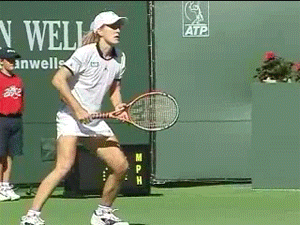
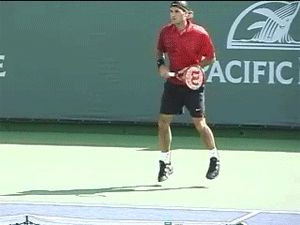
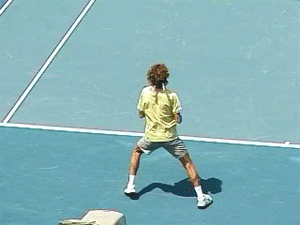
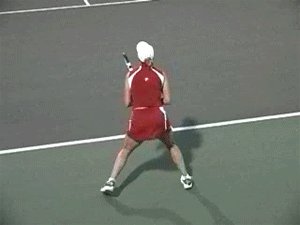
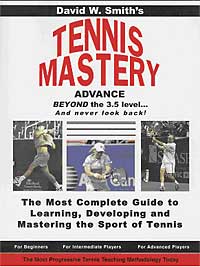
 Your comments are welcome. Let us know what you think about this article by
Your comments are welcome. Let us know what you think about this article by